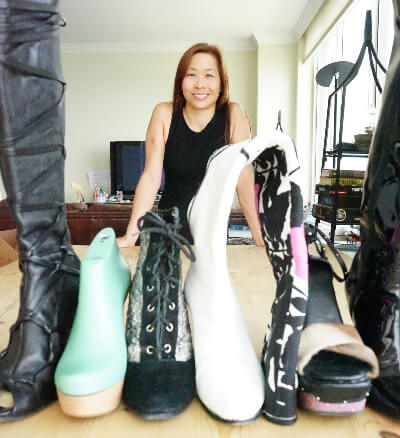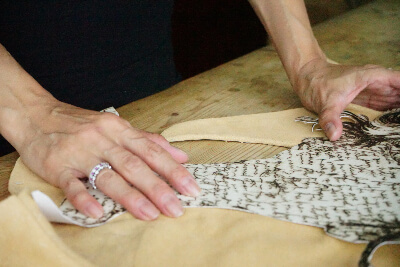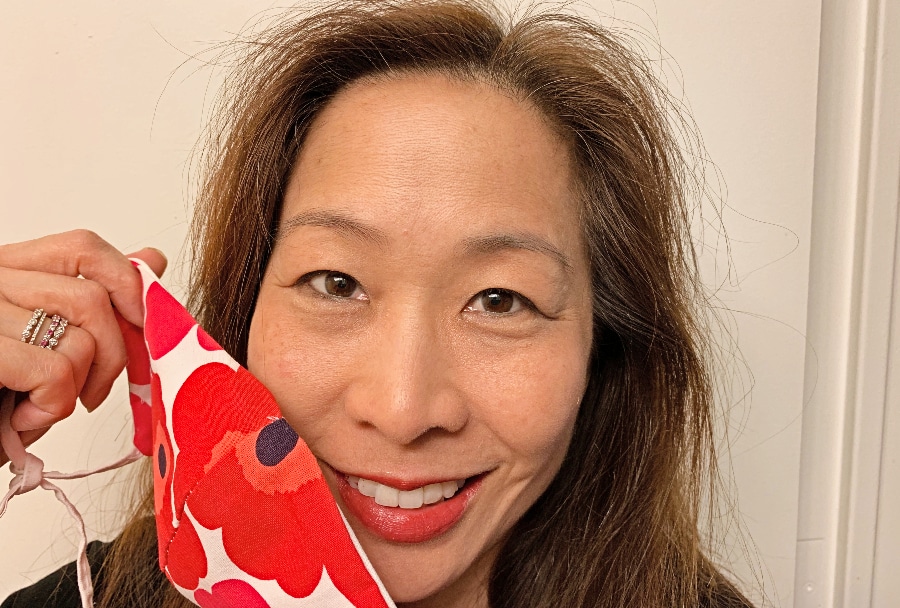Christina Chiu is the author of a new novel Beauty, about the ferociously competitive fashion world, and will be NextTribe’s guest at a virtual literary event on Thursday, May 28th. Please join us to talk about her book and this essay. RSVP and details here.
The fearful part of me is the six-year-old who got beat up by a bunch of boys walking home from school: “Chinese, Japanese, dirty knees,” they chanted.
We’d moved to Edgemont, a suburb 45 minutes outside of New York City filled with lush trees, a pond with clipped white ducks, and a quaint Tudor village. Our house had a backyard; the elementary school had what seemed like a mile-long field. After school, children played soccer or showed off their gymnastic ability by doing roundoffs and backflips. I hid in the school library until the playground cleared. I found Watership Down, a survival story about a group of rabbits trying to find a home safe from humans. I empathized with the rabbits. I understood what it meant to be terrified; the only way to safety was to run, but like the rabbits caught in the headlights, I felt paralyzed each time someone pushed me down, tore up my homework, or stamped my jacket into the mud.
All of this comes rushing back to me when a Japanese-American friend says, “I’m afraid to wear a mask when I leave the house.” She’s confirming what I’ve already been thinking. A mask might protect from the coronavirus, but is it worth it if it might incite an attack by a bigot? Ever since Trump started calling Covid 19 the “Chinese virus,” anti-Asian sentiment has been on the rise. He screwed up badly, initially calling the pandemic a “Democratic hoax.” To cover for caring more about his re-election than American lives, he needs to gaslight and shift blame.
The Bold Part of Me

Christina Chiu and some of her shoe designs.
The bold part of me is the 50-year-old writer, mother, and shoemaker. I took a shoemaking class at the Jewish Community Center to research my novel, Beauty. While writing was cerebral and solitary, I found shoemaking social and liberating in that I worked with my hands. My favorite fabric is a Marimekko pattern with bright red and pink poppies, each with an orange face and a black eye. It is fun, effusive, full of energy, bold and happy. Each flower is cute, but the overall effect is beautiful. It’s me; who I am. So much so that I used it to make an open-toed, knee-high pair of boots.
I dig out the remainder fabric and spread it open, floral print face up. Hospital masks look medical. Since Asians have been historically and systematically treated like we lack individuality, I know it will be even easier to perceive us as an indistinguishable “mass” when we wear masks. No name, no personality, just a bunch of faceless robots. The class-action lawsuit against Harvard last summer confirmed this. Documents revealed Asian American applicants have been consistently rated significantly lower than their white peers based on “personal” ratings—traits such as likability, courage, and kindness.
As the days go by and the COVID-19 situation grows incrementally worse, I feel frustrated and angry with myself for my reluctance to put on a mask. Why am I risking my health and the health of my family? While a mask may only be 50 percent effective, wearing it while practicing social distancing does provide some protection. Still, I’m self-conscious and fretful. I want to be invisible.
Only, that’s not who I am.
Read More: Mother-Daughter Fashion: Three Ways My Millennial Girls Improved My Wardrobe
Meditation with a Needle
I spread open the Marimekko fabric. This is. I trace the mask pattern onto the cloth, then flip it to draw the other side. This particular pattern requires cutting out the ax-head shapes, pinning the wide-edge sides together, and stitching them. Step one: “Join the curved seam that is center of our mask by placing the good sides together and sewing them in place.” I don’t have a sewing machine, so I do this by hand with needle and thread. My stitches are neat and even. Sewing is a slow, meditative process. It gives me time to think.
When I’m done sewing this edge, it’s like the former me and the current me are now hewn together, and I realize that self hate is caused by an accumulation of experiences. By the time I hit my teens, I’d internalized the overt acts of racism and the daily micro-aggressions much like Pecola in Toni Morrison’s The Bluest Eye.
I repeat the first step using a white pillowcase fabric to make the inner lining. Step two is to press the center seams, but since I hate ironing and don’t have an iron, I move on to step three: “Sew the outer to the inner fabric and attach ribbons.” For ribbon, I cut strips from the waste fabric, folding it in thirds going lengthwise, then pinning and stitching until I have two thin ropes. I cut each in half to make four and sew the ties in place.
Anti-Chinese Coronavirus Backlash

Christina cutting fabric for a face mask.
I hated being Asian my entire youth. It made me subject to abuse, often when I was least expecting it, and then I would have to brave it out while others told me, “Don’t let her get to you” or “he’s just ignorant.” I tried to be more American, more friendly, more popular. But how could I compensate for having a Chinese face? I turned toward self destructive habits with food, vacillating between binging and restricting, drinking at parties to the point of blacking out.
I sew along the perimeter, attaching the top to the lining, leaving a three-inch gap along the bottom edge for a filter. When I’m done sewing, I turn the mask right side out. Pink and red flowers on the front side and a white pillowcase lining on the back.
The incident that turned me around occurred during my freshman year in college. At a party, a junior called me “chink.” He said it loud, and when he saw I heard, he laughed. There were 20 people in the room and no one did or said anything. I felt humiliated, but then I also felt enraged. I wrote a piece for the school newspaper explaining what happened, expressing my disappointment in those 20 other people who had been in the room, and who were, intentionally or unintentionally, complicit. This sparked a year-long, campus-wide discussion: “What is racism?”
This was my first real experience as a writer. Expressing myself externalized and released the rage eating me up inside. It connected me with others. I started to change, growing bit by bit into the person I am today. Author. Mother. Shoemaker. The person who loves to smile and laugh, hates to iron and cook, and needs to create art to find some kind of truth or beauty in the world; the author who speaks out, expresses who she is, and is determined to self-define; the woman who wears open-toed boots with bold red and pink flowers. The woman who makes face masks with cheerful, beautiful fabric.
The mask is done just in time to walk the dog. I put it on and we head outside. While my dog sniffs around, a passing stranger asks, “Marimekko, right?”
I nod.
“I need a mask like that,” she says. “It’s beautiful.”
It is, I realize. It’s me.
Read More: 11 Ways to Get Through Cornavirus, NextTribe Style
***
Christina Chiu is the grand-prize winner of the James Alan McPherson Award for Beauty, a novel about a young Chinese-American fashion designer coming to terms with her identity and her evolving beliefs around beauty, family, and power. She is also the author of Troublemaker and Other Saints (G.P. Putnam’s Sons). Troublemaker was a nominee for a BOMC First Fiction Award, and winner of the Asian American Literary Award.





















0 Comments